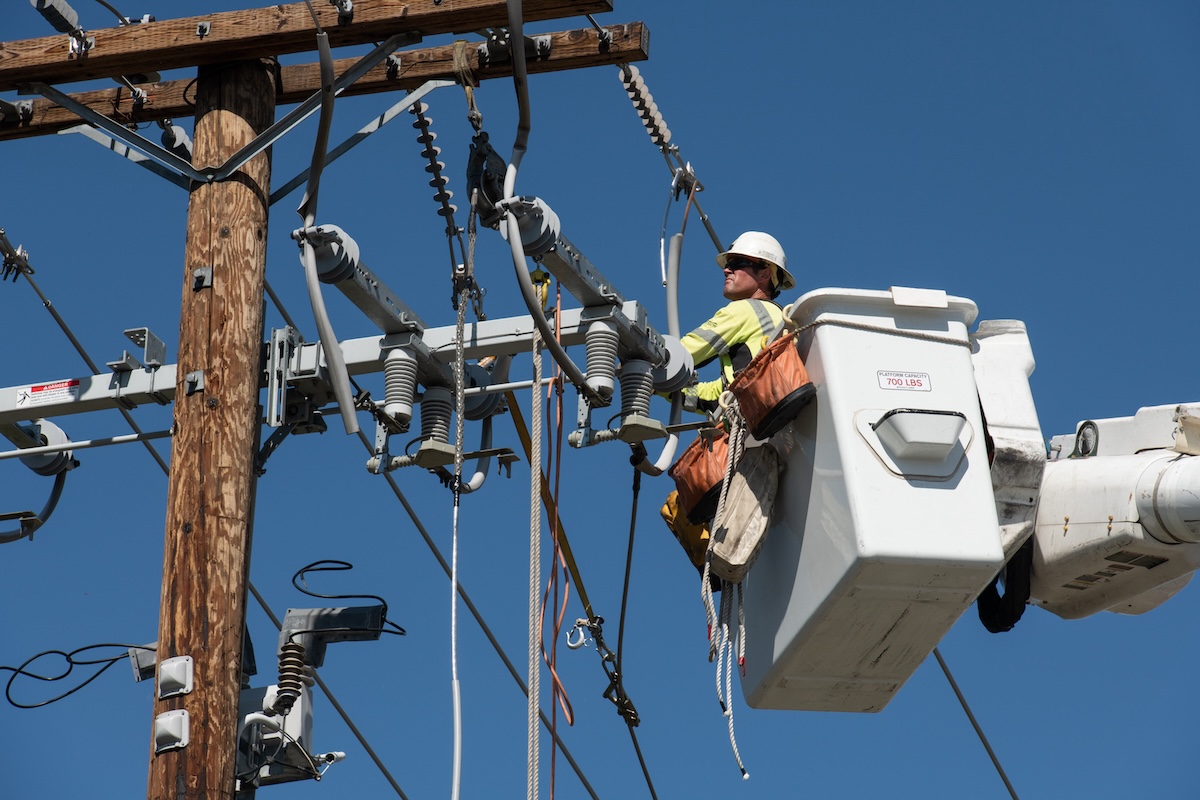Edison Makes Wildfire Claims Report

Some six years after the devastating Thomas and Woolsey wildfires began to wreak havoc on the bottom line of Southern California Edison, the end is finally in sight on two fronts for the utility subsidiary of Rosemead-based Edison International.
In its latest quarterly and annual earnings release last month, Edison revised upward once again by $67 million its estimate of the combined claims costs for both wildfires (and mudslides resulting from the Thomas Fire) to a new total of roughly $9.4 billion, with more than 90% of those claims expected to be resolved by the end of this year.
Edison also revealed that it plans to seek California Public Utility Commission approval to pass roughly $6.4 billion of that cost on to its ratepayers over the next several years. The company has already recovered from its insurers and the Federal Energy Regulatory Commission some $2.4 billion of that $9.4 billion cost.
Edison also updated its progress on its main effort to prevent future wildfires sparking from its equipment: the installation of insulation on – or undergrounding of – nearly 17,000 miles of distribution wires in high-fire-risk areas. As of the end of last year, 76% of those wires had been hardened to resist sparking fires, including nearly 5,600 miles of covered conductor installation; by the end of next year, Edison expects that figure to rise to 90%.
“SCE’s industry-leading covered-conductor program continues to make tremendous progress,” said Pedro Pizarro, Edison’s chief executive. “In just five years, SCE has installed more than 5,580 circuit miles of covered conductor. When combined with enhanced vegetation management, asset inspections and other programs, this has significantly reduced the need for public safety power shutoffs.”
Edison’s progress on these two fronts prompted one of the major bond rating agencies to take notice.
In rating Edison’s plan to issue and refinance bonds, Fitch Ratings in January gave a stable rating outlook.
“With the large majority of 2017/2018 wildfire liabilities resolved, Fitch expects (parent Edison)’s and SCE’s 2023-2026 credit metrics to improve significantly,” Fitch wrote in its commentary.
And in addressing the utility’s grid-hardening efforts, Fitch had this to say: “SCE has made meaningful progress strengthening the grid’s fire resilience in light of materially reduced wildfire activity over the past five years despite challenging wildfire conditions.”
Catastrophic wildfire losses
The December 2017 Thomas Fire, which burned nearly 282,000 acres in Ventura and Santa Barbara counties, destroyed 1,063 structures. At the time, it was the largest wildfire in California by acreage since at least 1932; since then, however, seven wildfires have each consumed more acreage.
Six weeks later, in January 2018, after an intense downpour, mudslides started on slopes burned by the Thomas Fire; as the slides roared into the Montecito community in Santa Barbara County, they damaged or destroyed more than 400 homes and killed 23 people.
Southern California Edison’s own internal investigation and the Ventura County Fire Department both determined that SCE’s equipment likely sparked one of two ignition points for the Thomas Fire, on Koenigstein Road east of Ojai.
Then in November 2018, the Woolsey Fire burned nearly 97,000 acres in Los Angeles and Ventura counties, destroying 1,643 structures. Investigations by the California Public Utilities Commission and the Ventura County Fire Department pointed to Southern California Edison equipment having a role in triggering that fire.
In the months and years since these fires and related events, thousands of damage claims have poured into Southern California Edison. As more claims came in and as more settlement agreements took shape, Edison executives kept upping their total financial impact. In mid-2021, the figure stood at about $6 billion, with a major upward revision later that year bringing the total to about $7.5 billion.
In its most recent earnings report, Edison upped the loss figure again by $65 million to $9.4 billion, with a total of about 12,000 claims resolved. And that figure could still go up: the final deadline for Woolsey Fire claims resolution packages was last month and Edison executives were still evaluating the responses from the estimated 1,300 outstanding Woolsey Fire claims.
With the exception of one claim settlement that came in significantly larger than expected, Pizarro told analysts during Edison’s most recent earnings teleconference call that “overall claims are settling in line with expectations.”
Who will pay the claims costs?
As the claims settlements mounted, Edison took a series of write-downs, with the largest being a $1.8 billion charge against earnings in the fourth quarter of 2018. More recently, though, Edison has entered the long regulatory process with the state Public Utilities Commission to try to get $6.4 billion of these losses covered through several years of surcharges on ratepayer bills.

In August, Southern California Edison filed an application with the commission to have $2.4 billion in costs associated with the Thomas Fire and resulting mudslides passed on to ratepayers. In its earnings presentation, Edison said a final decision on this request could come “as soon as first quarter 2025.”
That same earnings presentation said Southern California Edison is preparing to file its application to pass on $4 billion-plus in Woolsey Fire claims costs to the utility’s ratepayers. The application would likely be filed this summer; the exact timing will depend on when the utility achieves the milestone of resolving 90% of the outstanding claims from that fire. If the timeline for the Thomas Fire application is any guide, it would likely take the Public Utilities Commission two years to reach a decision on this second application.
As these cases are considered by the commission, Edison will likely face an uphill battle to get approval to pass on the entire $6.4 billion cost to ratepayers. Whatever doesn’t get passed on to ratepayers could ultimately come out of shareholder returns.
Most grid-hardening completed
In its earnings presentation, Edison said that workers with its utility subsidiary have installed insulation covers on nearly 5,600 miles of distribution wires over the last five years. Another 1,070 miles of wires are expected to be insulated by the end of this year.
After that, the pace is expected to slow, since only about 1,800 miles of high-risk wires will remain and Southern California Edison plans to take four years to insulate these wires. By 2028, the utility projects that all of its power lines in high fire-risk areas will either be insulated or moved underground.
The insulation is designed to reduce the chances of the wires sparking and then igniting blazes. The utility noted that in the five years since the program began there has not been a single instance of an insulated power line causing a fire.
With this track record, Southern California Edison has not had to resort to power shutoffs nearly as frequently. Power shutoffs are meant to be a tool of last resort, since they are so disruptive to the affected residences and businesses.
According to Edison spokesman Jeff Monford, even when power shutoffs do occur, they are now much more targeted than they once were, thanks to improvements in circuitry technology. This means fewer residences and businesses are impacted.
Despite all these efforts, Edison isn’t completely out of the woods. Besides the risk of the remaining claims costing more to resolve than expected and the possibility that Edison won’t be able to pass as much of the claims costs to ratepayers as hoped, there’s still the possibility of more destructive fires.




